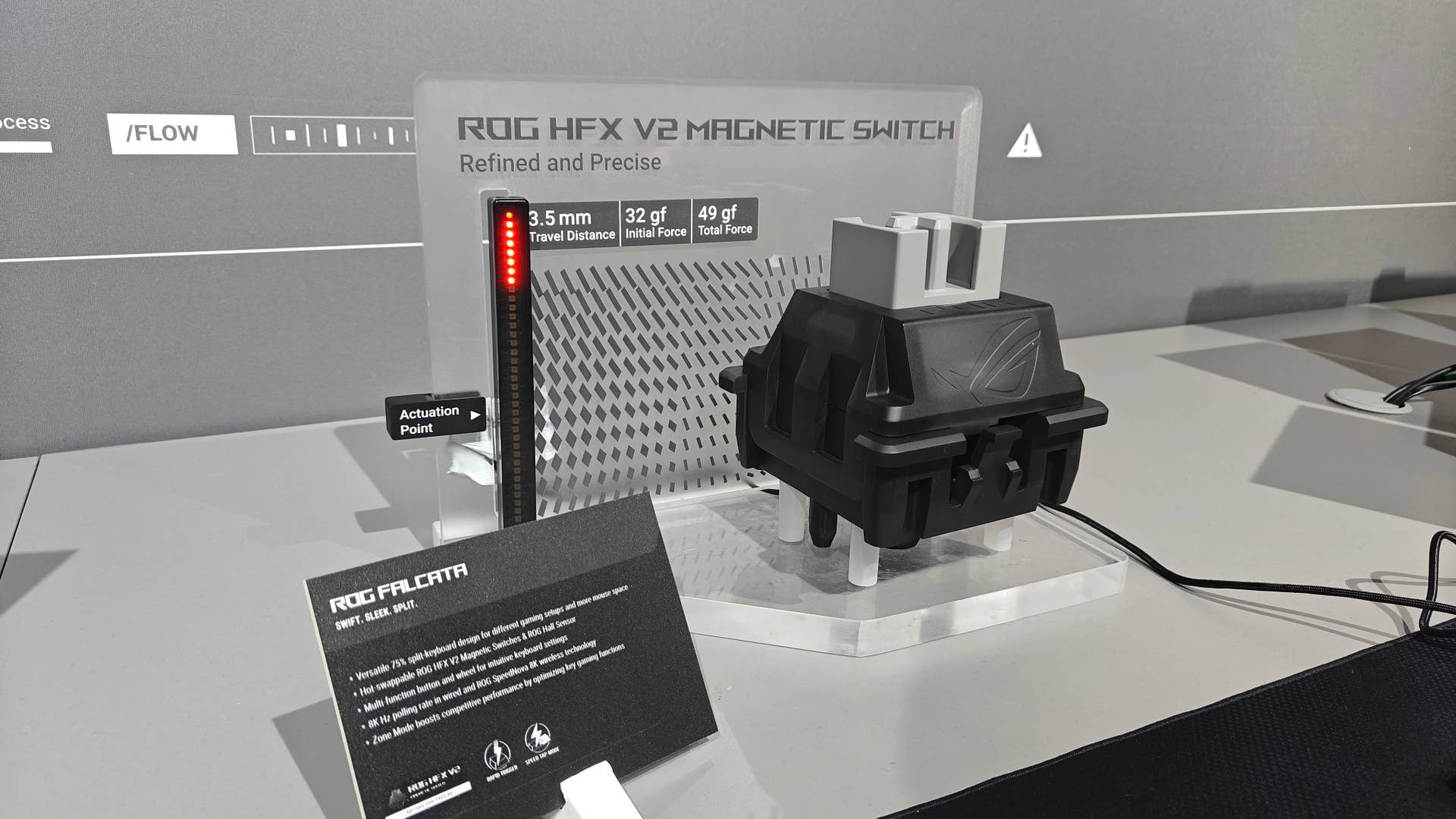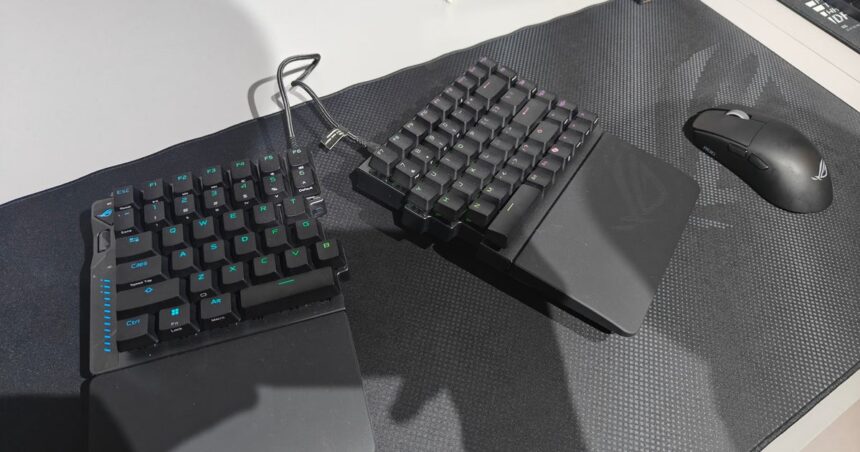I want to tell you about my favourite thing from Gamescom. It’s not the Xbox Ally X, it’s not an active sim racing brake pedal, and it’s not even that 720Hz tandem OLED monitor. It’s a keyboard – a very special keyboard with one glaring flaw. Let me explain.
The Falcata is another of Asus’ keyboards named after a sword (Falchion, Claymore), and in this case it’s a falcon-shaped sword that was used in the Iberian peninsula. I had no idea that “falcon” was a valid shape for a sword, but there you go. The keyboard itself isn’t Falcon-shaped (thankfully), instead it’s kind of normal 75 percent keyboard sized. It does look a little odd though, with a loop of USB wire up top connecting the left side to the right.
That’s because the keyboard splits in half when given a tug, allowing some interesting possibilities. The left side houses all of the internals, so you can use it fully standalone as a keypad, giving you a huge amount of mousing space even if you have a small desk. You can also keep that right side connected, but separate the two halves, angling them outward for a more comfortable typing position. The bonus here is that a convenient space opens up between the two halves, which is ideal for a steaming mug of tea.
Beyond the split ergonomic design, the Falcata is quite a comfy keyboard for typing. The big difference here is the inclusion of four layers of sound dampening poron and silicone, quieting the keyboard while also making its report deeper and more satisfying. There are also PBT keycaps, which last longer than ABS alternatives and tend to have a bit more texture to them, and detachable wrist rests for each side.
The Falcata is also very capable when it comes to gaming, with a laundry list of “best mechanical keyboard 2025” features: magnetic (Hall Effect) switches, rapid trigger (keys react instantly to being pressed or released rather than only when passing set depth thresholds), SOCD (pairing keys so that pressing one automatically disables the other, useful for side-strafing in FPS titles), 8000Hz polling (rinses your battery life to minimise input latency). And yup, this keyboard has 2.4GHz and Bluetooth connectivity, so there is a built-in battery. You can also use the keyboard wired if you prefer, with 8000Hz being an option both wired and via the 2.4GHz connection.


To see this content please enable targeting cookies.
Setting up your keyboard can take a second or hours, depending on your requirements, but you don’t need to install software to do this with the Falcata. Instead, you can access web software to rebind keys, adjust the RGB lighting or make macros. This is a continuing trend these days, and as someone that is contractually obligated to clutter up my computer with thousands of peripheral drivers and software, I feel very grateful.
Now here’s the bit where I lose the otherwise-interested reader: the Falcata costs £376 or $420, which is about 50 percent higher than even I expected. That’s a ludicrous price, even for the high-end specs and features offered, but sadly ergonomic keyboards like this do come with a massive mark-up. The keyboard isn’t yet out, so I hope there’s room for that price to come down before launch – or a cheaper wired model to be commissioned. Regardless, it’s likely that we’ll see more affordable imitators before too much longer. And maybe one of those keyboards will be my favourite piece of tech from Gamescom 2026.
Disclosure: Asus paid for flights and accommodation to Cologne for Gamescom so that we could see their new products in person.





